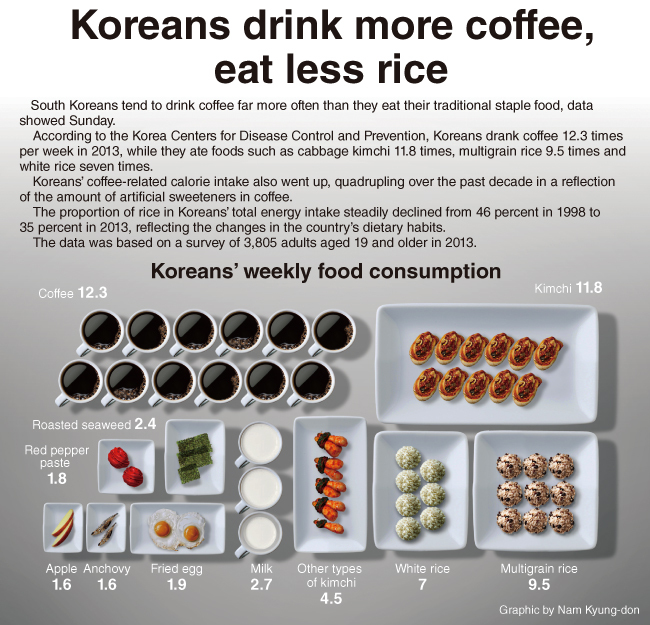One thing I recently got interested in is coffee consumption around the world. In most of the world, growing coffee consumption can serve as a way of measuring how much energy and focus adults feel they need, and if you can get a sense of when people drink coffee— just in the morning, or throughout the day— you can make some educated guesses about how common naps are. (Circadian rhythms don’t change as incomes rise: no matter how rich you are, your energy and cognitive abilities are at their lowest in the early afternoon, and during those low times you can either take a nap or try to power through them.)
One of the countries I wanted to survey was Korea. I know there’s a big coffee culture there: when I was there ten years ago there were already lots of coffee houses, and their numbers have fairly exploded since then. But according to a Korea Herald article, Korean coffee consumption has gone up so much in recent decades that Koreans now drink coffee more often than they eat kimchi or rice!

Here’s the story:
According to the Korea Centers for Disease Control and Prevention, Koreans drank coffee 12.3 times per week in 2013, while they ate foods such as cabbage kimchi 11.8 times, multigrain rice 9.5 times and white rice seven times.
Koreans’ coffee-related calorie intake also went up, quadrupling over the past decade in a reflection of the amount of artificial sweeteners in coffee.
Consumption of coffee in Korea has risen from 1.1 kg per capita in 1990 to 2.98 kg per capita in 2014, thanks to rising incomes, cheap coffee from Vietnam, an incredible diversity of cafes, which range from a 4-story Starbucks to tiny theme cafes (this 2012 ethnographic study is available if you really want to know more).